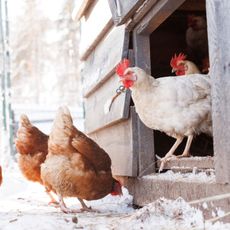Stephanotis Plant Care: Growing And Caring For Stephanotis Flowers


Stephanotis flowers have long been treasured for their beauty and sweet scent. The tropical twining vine, with its dark shiny foliage and snowy flowers, are a traditional element in wedding bouquets and many of us received our first info on the Stephanotis flower from our florist.
Info on the Stephanotis Flower
When we talk about Stephanotis plant care, we're talking about Stephanotis floribunda, or Madagascar jasmine, though it is not a member of the jasmine family. It is one of five to ten species identified within the genus of twining vine-like shrubs and is the most popular among indoor gardeners. The flowers present as narrow, tubular, waxy horns about 2 inches (5 cm.) in length.
Each flower has a crown of five lobes and stamens that someone long ago thought looked like tiny ears, hence the name from the Greek stephanos (crown) and otis (ear). The leaves are leathery, oval-shaped, and opposite and the plant's woody tendrils can grow to 20 feet (6 m.) in the wild.
Since it is a tender, tropical perennial, info on the Stephanotis flower is usually directed to indoor care, for Stephanotis is very particular about its mini-climate environment.
Care for Stephanotis
If you live in an area that meets the requirements for Stephanotis plant care-- sufficient rain, high humidity, warm winters-- you can grow this plant outdoors year-round, but for most gardeners, these beauties will spend at least part of their year indoors, particularly in winter.
Indoor care of Stephanotis can be problematic and they tend to suffer from shock when their environment is radically changed. One of the reasons there isn't more written about Stephanotis plant care is their difficult nature. These fussy tropicals aren't the easiest plants to care for.
Stephanotis are easiest to grow in greenhouses where strict attention can be paid to their needs. With time and effort though, it is possible to care for Stephanotis in your home. In order to provide the optimum environment for your Stephanotis, plant care should begin with the soil.
Gardening tips, videos, info and more delivered right to your inbox!
Sign up for the Gardening Know How newsletter today and receive a free download of our DIY eBook "Bring Your Garden Indoors: 13 DIY Projects For Fall And Winter".
These plants require a rich, loamy soil that retains constant moisture, yet you can never leave them with soggy roots, which will cause the leaves to curl and the plant to die. A trellis should be provided, though when grown indoors, Stephanotis floribunda rarely grows to its maximum height. They should be fertilized with a half strength solution twice a month during the growing season and the plants should be misted regularly since they demand a relative humidity level of 40 to 80 percent.
Due to their need for warmth and constant moisture, Stephanotis plants are also susceptible to both mealybugs and scale. Summer temperatures are more flexible for Stephanotis flowers as long as averages remain around 70 to 80 degrees F. (22 C). They prefer cooler nights of 55 to 60 degrees F. (13-16 C). Since they are tropical in nature, they require medium to bright light, but tend to burn in direct sunlight.
Winter Indoor Care of Stephanotis Flowers
Stephanotis are particularly challenging in winter. Indoor care of Stephanotis doesn't mesh well with the winter care of people. They demand much cooler temperatures hovering around 55 degrees F. (13 C). If the temperature rises too high, the plant will die. Anything below 50 degrees F. (10 C.) is usually too cold for the plant's survival. Their watering requirements drop dramatically, but they still like the occasional misting. Do not fertilize during the winter months.
Stephanotis Flowers and Seed Pods
You won't find much info on the Stephanotis flower seed pod because it is so rare in the home garden. If conditions are perfect, your plant will produce fruits that are usually described as egg or pear shaped and can reach 4 inches (10 cm.) in length. This inedible fruit takes months to ripen and will eventually split and turn brown.
The pod can then be pulled apart to reveal a mass of flat seeds with white, feathery hairs attached similar to the more familiar milkweed, which is, in fact, a relative. These seeds can be planted, though propagation through stem cuttings is more common and successful.
Stephanotis floribunda is relatively new on the home gardener market and their care can be tedious, but if you're looking for a gardening challenge, this plant may be the one for you.

Jackie Rhoades began writing for Gardening Know How in 2010.
-
 Winterizing Chicken Coop Pens And Boxes: 5 Steps To Keep Chickens Safe & Warm
Winterizing Chicken Coop Pens And Boxes: 5 Steps To Keep Chickens Safe & WarmWinterizing chicken coop pens and boxes is a crucial way to keep your chickens safe and warm in the cold season. Follow our five steps for happier, healthier chucks
By Bonnie L. Grant
-
 Ditch The Gym: 5 Gardening Activities That Give A Better Workout
Ditch The Gym: 5 Gardening Activities That Give A Better WorkoutSkip grueling workouts at the gym and get fit in your garden! These gardening activities will give you a better workout while growing something amazing.
By Mary Ellen Ellis